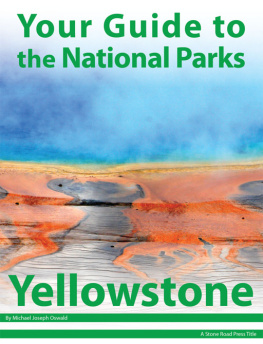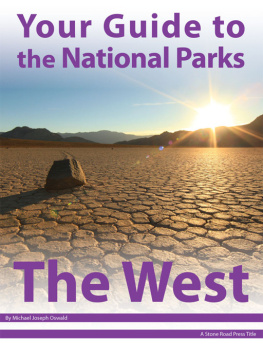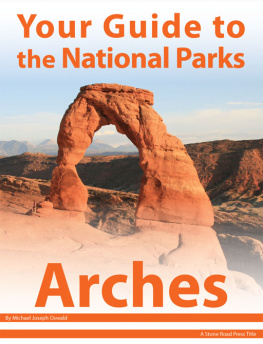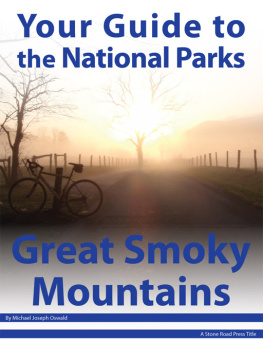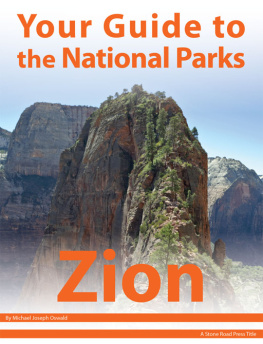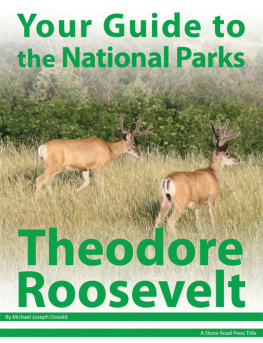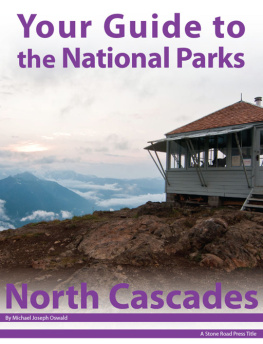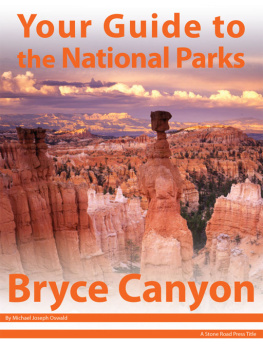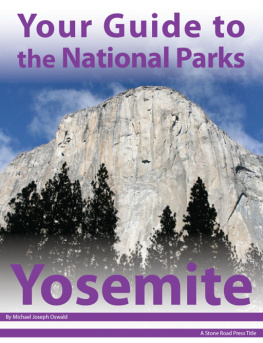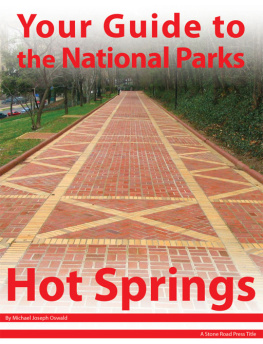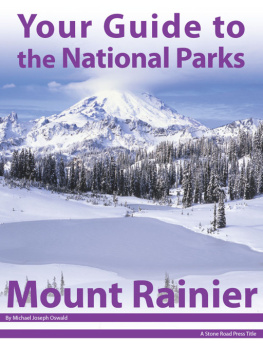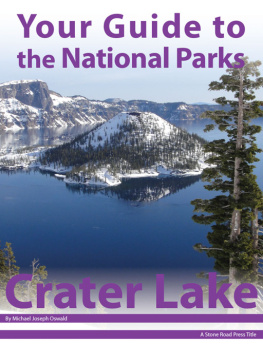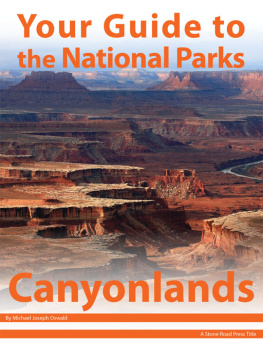Your Guide to Yellowstone National Park, First Edition (electronic)
ISBN: 978-1-62128-016-3
Published by: Stone Road Press
Author/Cartographer/Photographer/Designer: Michael Joseph Oswald
Editor: Derek Pankratz
Copyright 2012 Stone Road Press, LLC, Whitelaw, Wisconsin. All rights reserved. No part of this publication may be reproduced, stored in a retrieval system or transmitted in any form or by any means, electronic, mechanical, photocopying, recording, scanning or otherwise without written permission of the Publisher. Requests for permission should be addressed to Stone Road Press; c/o Michael Oswald; 4927 Stone Road; Whitelaw, WI 54247.
The entire work, Your Guide to the National Parks is available in paperback and electronic versions. Content that appears in print may not be available electronically.
Paperback ISBN: 978-1-62128-000-2
Library of Congress Control Number (LCCN): 2012934277
Printed in the United States of America
E-Book ISBN: 978-1-62128-0 65-1
Corrections/Contact
This guide book has been researched and written with the greatest attention to detail in order to provide you with the most accurate and pertinent information. Unfortunately, travel informationespecially pricingis subject to change and inadvertent errors and omissions do occur. Should you encounter a change, error, or omission while using this guide book, wed like to hear about it. (If you found a wonderful place, trail, or activity not mentioned, wed love to hear about that too.) Please contact us by sending an e-mail to . Your contributions will help make future editions better than the last.
You can contact us online at www.StoneRoadPress.com or follow us on
Facebook: www.facebook.com/thestoneroadpress
Twitter: www.twitter.com/stoneroadpress (@stoneroadpress)
Flickr: www.flickr.com/photos/stoneroadpress
FAQs
The world of electronic media is not cut and dry like print. Devices handle files differently. Users have a variety of expectations. These e-books are image- and map-intensive, requiring fairly powerful hardware. All books were tested for use on the Kindle Fire, Nook Tablet, and iPad. You can expect to have the best user experience on one of these devices, or a similar tablet, laptop, or desktop. In the event you have issues please peruse our Frequently Asked Questions (.
Maps
Numerous map layouts were explored while developing this e-book, but in the end it was decided that the most useful map is a complete one. Unfortunately, due to file size concerns and e-reader hardware limitations, some maps included in this guide book are below our usual high standards of quality (even using zoom features). As a workaround all of this books maps are available in pdf format by clicking the link below each map or visiting www.stoneroadpress.com/national-parks/maps .
Disclaimer
Your safety is important to us. If any activity is beyond your ability or threatened by forces outside your control, do not attempt it. The maps in this book, although accurate and to scale, are not intended for hiking. Serious hikers should purchase a detailed, waterproof, topographical map. It is also suggested that you write or call in advance to confirm information when it matters most.
The primary purpose of this guide book is to enhance our readers national park experiences, but the author, editor, and publisher cannot be held responsible for any experiences while traveling.
Photo Credits
Front cover: Grand Prismatic Spring Frank Kovalchek
Yellowstone - Introduction

Midway Geyser Basins Grand Prismatic Spring as seen from Fairy Falls Trail Frank Kovalchek
Long after Americans reached the Pacific Ocean, explorers, fur trappers, and frontiersmen began filling in blank spots left between the East and West Coasts. In the 1850sbefore Wyoming became a territoryone of these unmapped regions was reported as a rugged wilderness of boiling mud, steaming rivers, and petrified birds. Such reports were promptly disregarded as myth in the East, colorful yarns spun by colorful men, and publishers curtly responded We do not print fiction. Still, these landscapes captured the curiosity of several expedition parties. In 1871 the U.S. government deployed the Hayden Geological Survey to uncover the truth. Ferdinand V. Hayden , painter Thomas Moran , and photographer William Henry Jackson were sent to assess what really existed. Less than one year later, President Ulysses S. Grant signed the Act of Dedication , effectively making Yellowstone the worlds first National Park. This large tract of land in northwestern Wyoming Territory, barely extending into Montana and Idaho Territories, was set aside, preserved for the enjoyment of the people. Much like the areas first explorers, todays visitors come across steaming rivers, towering waterfalls dropping into deep canyons, bubbling mud-pots, hot spring terraces, and boiling water gushing from the earth. Sights so amazing that they inspire the same disbelief of 19th century publishers and politicians. Yet it is real. Guests can see it. Touch it. Smell it. It is Yellowstone.
The first people known to have explored the land known today as Yellowstone were Native Americans . Discovery of obsidian arrowheads dating back 11,000 years suggests they used this land as a hunting ground shortly after glaciers from the last great ice age receded. By the Lewis and Clark Expedition of 1805 , trappers had already named the river Roche Jaune or Rock Yellow River referring to yellow sandstones found along its banks. (It is a common misconception that the river was named for yellow coloring caused by rhyolite lava seen at the Grand Canyon of the Yellowstone.) In 1806, John Colter left Lewis and Clarks Expedition to work for Missouri Fur Trading Company, exploring the regions comprising present-day Yellowstone and Grand Teton National Parks. He is believed to be the first white man to see Yellowstone Lake, at least one geyser, and the Teton Range. While Lewis and Clark would have believed Colters accounts, many jokingly referred to the land of boiling mudpots and steaming rivers as Colters Hell.
Few explorers ventured into Colters Hell until 1871, when Haydens Geological Survey explored the region. During the expedition, a party member suggested the area should be set aside as a national park. Hayden agreed and became the most enthusiastic and devoted advocate of this newly conceived park idea. His report declared the land unsuitable for farming because of its high elevation. Mining was impossible because of its volcanic origins. These findings combined with images and paintings collected during the expedition were enough to convince Congress to withdraw this region from public auction. On March 1, 1872, President Grant signed a law creating Yellowstone National Park, the first of its kind anywhere in the world.
N.P. Langford became the parks first superintendent (allowing him to sign his name National Park Langford). It was not a glamorous position. He was denied salary, funding, and staff. Without resources to protect the park, it was vulnerable to poachers, vandals, and others seeking to raid its resources. Philetus Norris was appointed as Yellowstones second superintendent, and first to receive a salary. Although meager, he received enough funding to begin construction on a system of roads and to hire Henry Yount as gamekeeper. Yount is widely regarded as the first park ranger, but he resigned when it was obvious the job of preventing poaching and vandalism was far too great a task for one man.
Protecting the park would only become more difficult as tourism increased. Completion of the Northern Pacific Railroad line to Livingston, MT and the parks northern entrance had dramatic results. Visitation increased from 300 in 1872 to more than 5,000 in 1883. The railroad sought to develop the areas prime locations with help from an amiable superintendent named Rufus Hatch . Under Hatchs leadership, trash was discarded in streams and fumaroles, tourists were charged exorbitant amounts, animals were killed for food, trees were chopped for construction, and coal was mined from park land. Americas first and only national park was being exploited by everyone, developers, poachers, and its stewards. Many sympathetic Americans believed Hatch was destroying the park. To prove this point, Civil War hero General Phillip Sheridan invited President Chester A. Arthur to join him on a Yellowstone camping trip. The first Presidential visit led to legislation appropriating $40,000 for the park, regulating Hatchs development, and allowing the Secretary of the Interior to summon troops to prevent vandalism and hunting.
Next page
